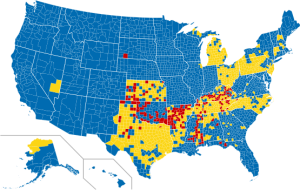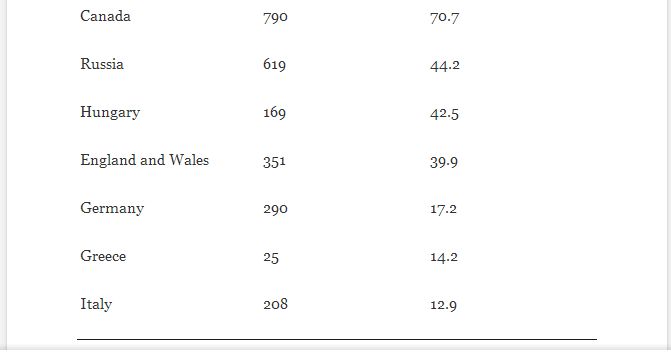Part 2 is here: Beer, Cholera, and Public Health
Prohibition is a strange period in American history. Disparate bedfellows–women, Puritans, even the Klan–united in their hatred of Irish drunkenness (and the Germans who enabled it) to actually pass a Constitutional amendment banning alcohol for the whole country.
These days, everyone likes to laugh and point fingers at our dumb idiot ancestors who were so dumb, they thought the Irish were bad immigrants. What they miss, of course, is that the Irish immigrants of the 1800s and early 1900s actually were problematic and were involved in a lot of crime, much of it drunken. (My general impression is that the Italians were involved in more crime, but the Irish were more numerous.) Things were so bad, people thought Prohibition sounded like a good way to improve matters.
The Germans
The Germans started showing up en masse after the failed rebellions of 1848. The losers–mostly middle to upper-class Germans with ideas about democracy and socialism–decided to head somewhere they were less likely to get killed by the state. Many German immigrants, however, were just folks in search of new opportunities for a better life. Like in the Ostsiedlung, German migration to the US was not a free-for-all, but often consisted of organized groups of like-minded academic revolutionaries like the Latin Settlements (whereby “Latin” we mean, “people who spoke Latin”) or created by folks like the Giessener Emigration Society, whose goal was the creation of a new German state within the US. The Germans generally found their new settlements nice enough in the sense of not being in immediate danger of decapitation, but kind of boring, especially now that they had no evil aristocrats to struggle against.
Now that I think about it, I wouldn’t be surprised if the emigration of Germany’s most anti-authoritarian people left behind a German population that was, as a result, far more temperamentally pro-authoritaian, resulting in Bakunin’s observation that an anarchist revolution could never succeed in Germany because the Germans were the statiest of people.
By 1872, Germany was America’s largest source of people, settling primarily in the North:

Take note of the little patch of Germans in Texas and in the corner of Texas-Louisiana-Arkansas, then compare to today’s map of counties where Prohibition is still in force:

Where there are Germans, beer tends to be legal. (The Germans in Pennsylvania and Ohio are perhaps a different sort from the rest.)
The Germans brought with them a talent for large-scale production of high-quality products–in this case, beer. Yes, beer (and other forms of alcohol) had been produced in the US ever since some ancient Indian left some watery grain or fruit out too long and it began to ferment, and the original colonists had brewed plenty British ales and apple ciders, but German immigrants brought the lagers that became the characteristically “American lagers” we know today.
Anheuser-Busch? Founded by Germans.
“Adolphus Busch was the first American brewer to use pasteurization to keep beer fresh; the first to use mechanical refrigeration and refrigerated railroad cars, which he introduced in 1876; and the first to bottle beer extensively.[1][11][12] By 1877, the company owned a fleet of forty refrigerated railroad cars to transport beer.[12] Expanding the company’s distribution range led to increased demand for Anheuser products, and the company substantially expanded its facilities in St. Louis during the 1870s.[13] The expansions led production to increase from 31,500 barrels in 1875 to more than 200,000 in 1881.”
Budweiser? Named after Budweis, a city in the modern Czech Republic. Michelob is named for the Czech town of Michalovice.
Miller Light, produced by the Miller Brewing Company (now after many company mergers and acquisitions part of MillerCoors,) founded in Milwaukee in 1855 by Friedrich Eduard Johannes Müller of Riedlingen, Württemberg.
Coors was founded in 1873 by German immigrants Adolph Coors and Jacob Schueler, using a recipe they’d bought from a Czech immigrant.
The oldest and biggest (by volume) beer company in the US today is D. G. Yuengling & Son, (founded 1829,)where Yuengling is an anglicization of Jüngling, which was, of course, simply David Gottlob Jüngling of Aldingen, Kingdom of Württemberg‘s last name.
Johnny-come-latey Boston Beer Company (maker of Sam Adams ale) often ties Yuengling for sales. Sam Adams was founded in 1984 by Jim Koch, yet another German, who supposedly brewed up the first few batches in his kitchen using an old family recipe.
If you want more on the history of German beer making in America, here’s the Wikipedia page on American Beer and a slightly more detailed article on Beer History.
Long story short, all of those “American” beers are German/Czech.
The Irish
The Irish, unlike the Germans, were a disorganized mass of peasants fleeing the great famine and continuing Irish poverty. They were not suave, classically-trained academic revolutionaries, but tired, poor, huddled masses yearning to breathe free, the wretched refuse of Europe’s teeming shore, homeless and tempest-tost.
So desperate were the Irish to escape that many were willing to crowd into the horrific coffin ships, where conditions were so bad that 30% of the passengers died. Still, they managed to arrive in numbers that rivaled the Germans.
Unfortunately, despite this sympathetic start, the Irish managed to make themselves unpopular in their new home:
In 1871, the Orange Riots over a Protestant Irish parade in NYC resulted in the deaths of 63 people, putting modern NYC parade-related crimes to shame. The parade celebrated an old victory of Protestant Irish over Catholic Irish, so the Catholic Irish decided to attack the parade, despite the presence of 5,000 policemen and state militia, who of course shot back at the rioters.
In the 1860s, the Irish comprised over half of all arrests in NYC; amusingly, they were also almost half of the police. To this day, the Irish continue to serve their communities as police officers and fire fighters, and also criminals. According to the Wikipedia, “the Irish topped the charts demographically in terms of arrests and imprisonment. They also had more people confined to insane asylums and poorhouses than any other group. The racial supremacy belief that many Americans had at the time contributed significantly to Irish discrimination.[136]“
Things were bad enough that in 1856, the “Know Nothings” a nativist, anti-immigrant party carried Maryland and many Southern counties, (though we might note that their tactic of running former President Fillmore as their candidate without asking him first might not have been the most ethical.) Of course, by 1860 everyone had decided that the Irish were just fine, so long as they fought on their side, but once the Klan got going, it remembered the old mission of hating Papists and immigrants.
By 1872, the Irish population distribution within the US looked much like the German:
It was a synergistic relationship; the Germans were good at making the beer and the Irish were good at drinking it.
Of course, the Irish did not commit all of the crime–the Fins were drunker, Mexicans more murderous–but these migrant groups were far smaller than the Irish (especially in the mid-1800s; the southern and eastern European immigration waves began much later than the German and Irish waves):



Of course, since this was still the era of Segregation, “Coloreds” didn’t live among Puritans, but the Irish did.
The peaceful Swedes, Norwegians, and Germans tended to settle in the countryside, while the Irish and Italians, unable to afford train fare, stayed where they landed, giving the North East coastal cities a particularly strong tradition of crime-ridden ethnic enclaves. As the immigrant %age of American cities soared toward 50%, the police found themselves unable to control the resulting crime waves, and rival immigrant gangs were left to deal with each other.
Those Who Can See quotes Frank Tannenbaum’s Crime and the Community:
“The Jewish gangs that grew up to protect the Jew against the Irish, the Italian gangs later in conflict with the Jewish gangs, the old comment in certain parts of Chicago that “Every Irish kid was raised to kill a Swede,” the conflict between Negro and white that led to race riots in Chicago and East St. Louis, all trace the long-time irritation and conflict that contributed to the habit of violence, that led to coalescence of groups practicing violence against their neighbors,… ”
These days, of course, everyone wants to be Irish, because American “oppression” of Irish criminals means that Irish is now one of the few ethnicities a white person can proudly proclaim without getting accused of white privilege. Who wants to be English anymore? What did England ever contribute to the world, besides the works of Shakespeare, Newton, Darwin; the Industrial Revolution and modern capitalism; the ability to find longitude at sea; the Smallpox vaccine and epidemiology? LAME-O. Same for being an “American.”
In their defense, Irish crime appears to have been mostly drunken brawling, wife beating, and criminal neglect of their children due to their over-fondness of alcohol, rather than organized murder of the mafia variety, but if I have to read one more sob-story masquerading as “literature” about how the poor Irish couldn’t figure out how to stop drinking long enough to care for their children, well, I guess I will be very annoyed at the author.
(I don’t hate the Irish (who have been generally well behaved lately and certainly haven’t done anything to me personally); I hate the SJWs’ insistence on feigning ignorance about why anyone might dislike people who commit a lot of crime.)
The eventual, perhaps inevitable result was backlash, but we’ll get to that after our discussion of why the Irish drank so much in Part 2: Beer, Cholera, and Public Health.



